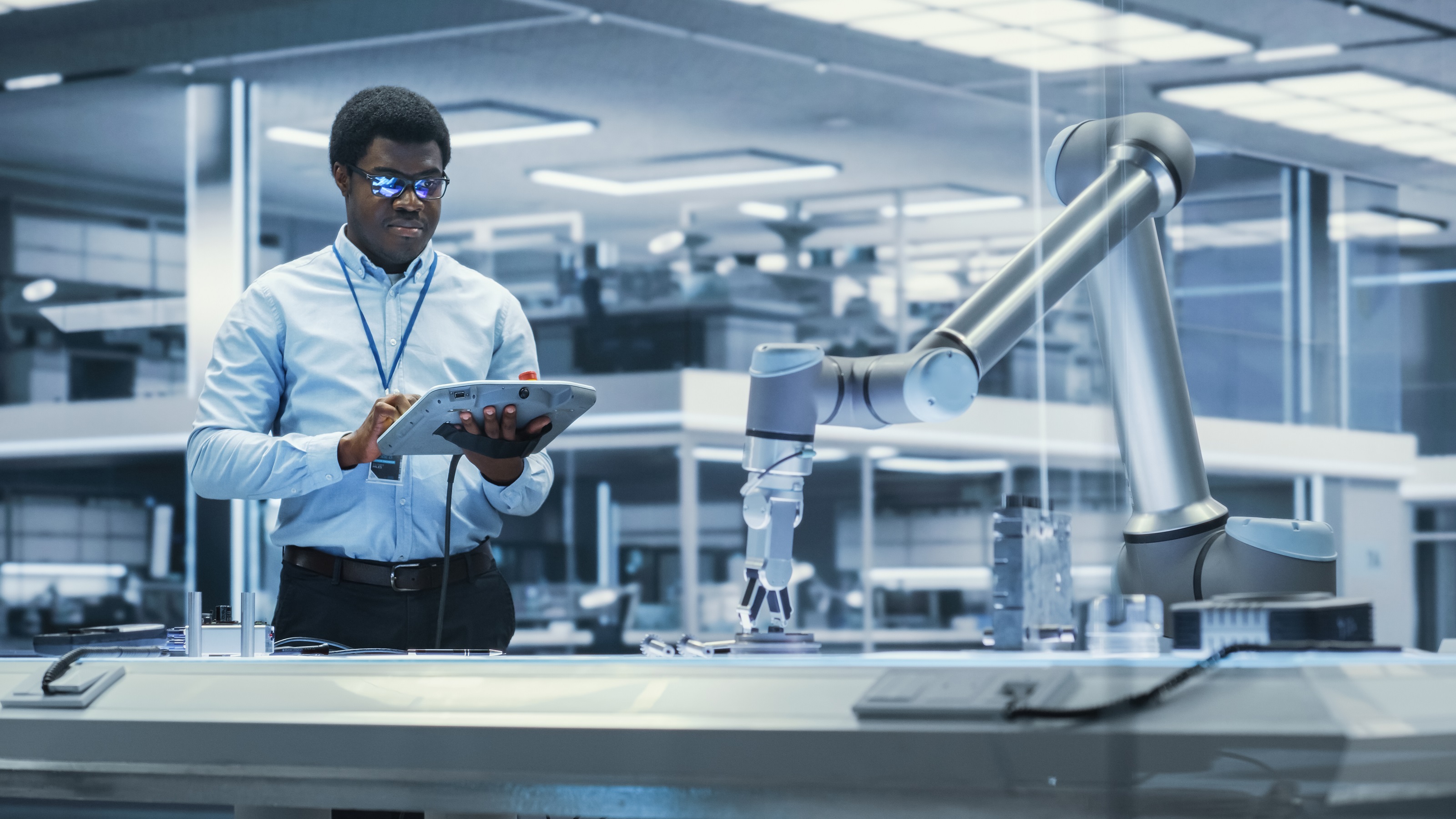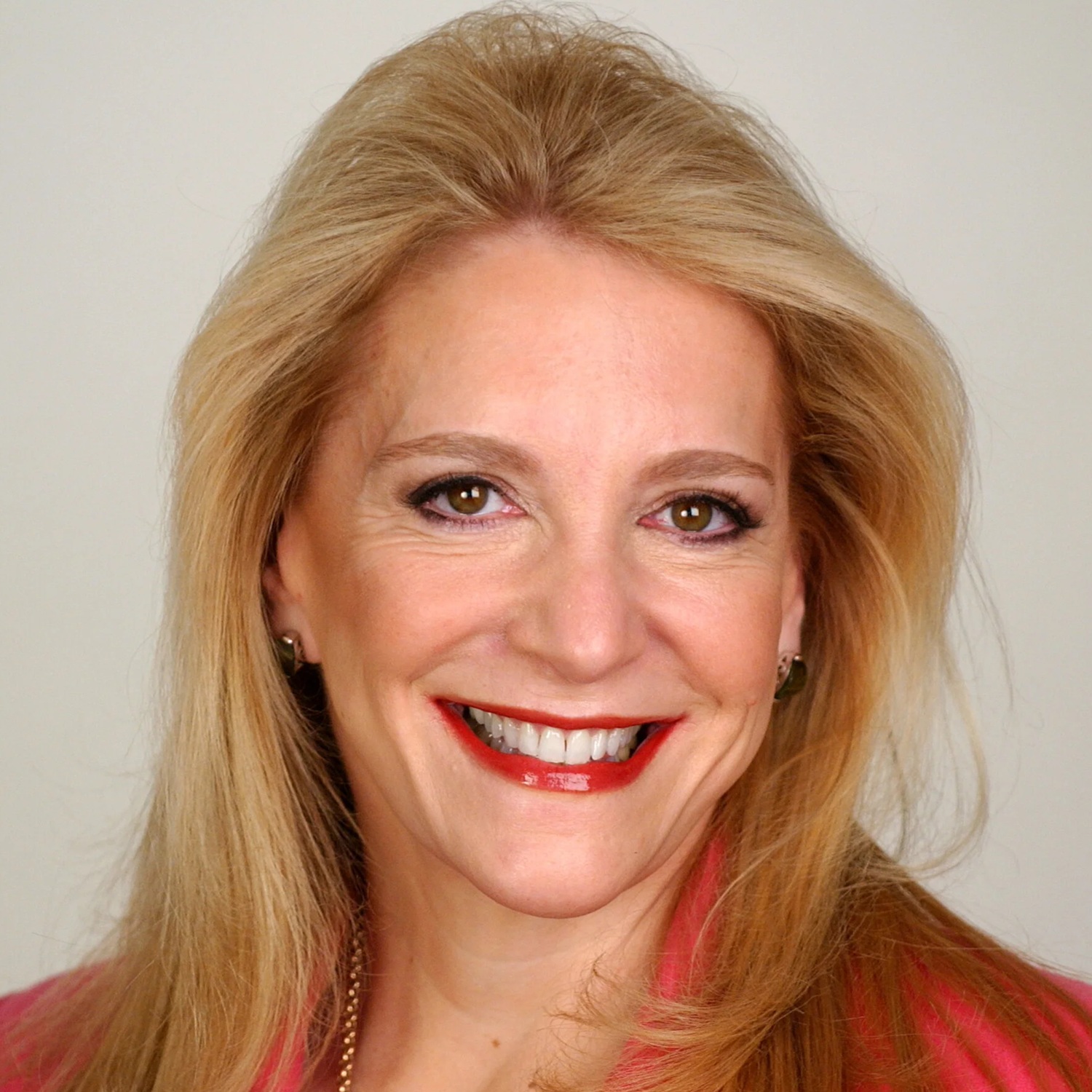We Don’t Have to Let AI Win
Just as companies and employees evolved with tech advances in the past, we can do that again with AI, but employers need to focus on preparing their workforces to keep up.


Take heart: AI doesn’t have to replace you — as long as you are smart about working with it rather than against it.
We know the amazing advances that technology has made. Really made. AI has an ability to research historical data and make predictions about the future. But I contend that those predictions need human interaction to truly create innovation. The challenge is to help humans keep up with the robots.
I’m an executive in residence at Columbia Graduate School of Business, and I have the honor of working with an amazing professor, Sheena Iyengar. She has developed a new theory of innovation and has just published the definitive work in this field, Think Bigger: How to Innovate. Her thesis and graduate course highlight the fact that all innovation is based upon things that occurred before.
From just $107.88 $24.99 for Kiplinger Personal Finance
Become a smarter, better informed investor. Subscribe from just $107.88 $24.99, plus get up to 4 Special Issues

Sign up for Kiplinger’s Free Newsletters
Profit and prosper with the best of expert advice on investing, taxes, retirement, personal finance and more - straight to your e-mail.
Profit and prosper with the best of expert advice - straight to your e-mail.
Fast ‘Ford-ward’
For instance, Henry Ford needed to solve the problem of producing less expensive cars. That meant that he had to reduce the time and cost of manufacturing. He identified his problems. If Ford had had AI, it could have researched where to buy cheap tools, cheap paint, cheap workers, but his AI may never have come up with Ford’s ultimate solution.
Iyengar teaches students to break down their problem into bite-sized pieces and see how others successfully solved those problems. She makes you look within and beyond your business domain.
With Ford, he had to shorten the time it took his workers to construct cars on his assembly line. (By the way, Oldsmobile came up with the idea of the assembly line, not Ford. Ford just adapted this previous success to his factory.)
With Ford’s old assembly line, the cars stayed put, and the workers moved from one car to the next with all of their tools. This made the assembly line slow. AI could have researched for him how to speed things up. But Ford looked for other assembly lines that were successful and found that in slaughterhouses, the carcasses moved rather than the workers. He realized this could be applied to his factories, as well. Voilà: innovation. Now, less expensive cars could be made faster.
The amazing productivity leap forward in the Industrial Age happened because humans figured out how to best organize labor around the new technology. In other words, humans worked with machines.
AI’s garbage will eventually become smart
I contend humans need to be part of the process working together with AI. AI can efficiently put “garbage in” and get “garbage out,” but it cannot make the tough innovative leaps … yet.
Iyengar told me, “The rise of AI technology will not replace humans or the work we do. AI tools being integrated into the workplace will allow people to create new choices. It will help us see unique combinations of old ideas that we might not have been able to see before, which is essential to the innovation journey.”
I agree that jobs will change, and workers will have to be educated to learn new skills. For example, when Ford made his car accessible to the masses, blacksmiths had to find new work, and they did.
I also agree with historian Louis Hyman’s assessment in The New York Times that AI will not necessarily end jobs, but rather, end boring jobs. He indicates that now people will be freed up to be more creative and, I think, innovative.
Ho-hum white-collar jobs
Many office jobs are now just based upon organizing data to help management manage better. The bosses need to know how things are going and to make decisions about how to stay the course or pivot. The job of organizing that data is boring.
I remember doing cash-flow statements when I was a trainee at Chase. Shoot me. I would have loved AI to give me that data so that I could use my brainpower to analyze whether to lend money to a company. I would have been freed up to solve more complex and strategic problems and not just figure out how to balance my tedious cash-flow statement.
This is all well and good, but how do we help the U.S. worker to keep up? This is the new conundrum. We need workers to work with AI to maximize innovation and productivity.
Are companies preparing their workforce to stay one step ahead as the world changes so rapidly?
Educate the workforce
The answer is obvious, but maybe not so obvious. The blacksmiths needed new skills, but who was going to teach them? Our new worker needs education, too. Higher-education degrees are great, but I contend that they are just the “gateway” to continuing education. The world changes too fast to sit on the laurels of having a sexy advanced degree. If you don’t keep up, you will be left behind.
Corporations have the biggest vested interest in keeping their employees educated. But unlike with computers, they also have to keep their employees happy and motivated.
Many high-touch industries, like healthcare, need humans, so far, and those humans need to keep up with our tech revolution. They must be able to incorporate the new technologies into their protocols so their superpowers are focused where they need to be.
It’s great if AI can give all of the background data on a patient, their DNA profiles and historic comparisons. Humans and robots have teamed up to perform unique surgeries. It’s also wonderful for AI to recommend medical pathways forward that have worked … but can AI speak to a patient? Care for the patient? Change a bandage? Not yet.
Step up to keep up
I looked for companies that are walking the walk with listening to what employers and employees need to keep up and keep ahead of the changing demands in the workplace. I found Bright Horizons EdAssist Solutions, a provider of workforce education benefits. I spoke to Dr. Jill Buban, who leads the learning ecosystem at EdAssist, about her work designing and implementing cutting-edge education benefits packages that can help employers attract the best talent in this tight labor market.
“AI is shifting the way we work and learn,” Buban said. “Any company today that wants to create a forward-thinking, innovative and motivated workforce will have to offer upskilling and reskilling opportunities to be relevant in this new economy of AI and beyond.”
The new world
Humans have always adopted and innovated. They figured out how to communicate by grunting, which became language, which became the spoken and written word. They innovated around the problem of how to communicate over distance by developing smoke signals, the Pony Express, Morse code, telegraphs and the mail system. Technology further allowed new innovations with the creation of telephones, which morphed into handheld devices. Then came computers, and now here we are with AI.
As Iyengar said, all of these innovations are built on previous innovations. Even Sir Isaac Newton explained that his ideas did not come from him alone: “If I have seen further, it is by standing on the shoulders of giants.” He also knew the value of continuing education. He was a highly educated scholar, but enhanced his education of the natural and scientific worlds throughout his life.
We can’t just rely upon standing on the shoulders of our educational institutions, though. Today’s workers have to look to their employers to supply continuing cutting-edge education, as well.
The mail system put the Pony Express out of work. Those riders had to learn new skills to have local, less dangerous jobs delivering mail and dodging dogs. As they did, we also can get off our high horses and accept that AI doesn’t have to be a threat, but an opportunity to find innovative solutions to problems of today and tomorrow.
It’s not about winning or losing. But without the proper education, and methods to innovate, we will all lose.
Profit and prosper with the best of Kiplinger's advice on investing, taxes, retirement, personal finance and much more. Delivered daily. Enter your email in the box and click Sign Me Up.

Neale Godfrey is a New York Times No. 1 bestselling author of 27 books that empower families (and their kids and grandkids) to take charge of their financial lives. Godfrey started her journey with The Chase Manhattan Bank, joining as one of the first female executives, and later became president of The First Women's Bank and founder of The First Children's Bank. Neale pioneered the topic of "kids and money," which took off after her 13 appearances on The Oprah Winfrey Show.
-
 CD Maturing Soon? Here's What to Do Next
CD Maturing Soon? Here's What to Do NextThese strategies of what to do when you have a CD maturing soon will have you maximizing returns even with rate cuts.
-
 How to Make 2026 Your Best Year Yet for Retirement Savings
How to Make 2026 Your Best Year Yet for Retirement SavingsMake 2026 the year you stop coasting and start supercharging your retirement savings.
-
 You Saved for Retirement: 4 Pressing FAQs Now
You Saved for Retirement: 4 Pressing FAQs NowSaving for retirement is just one step. Now, you have to figure out how to spend and maintain funds. Here are four frequently asked questions at this stage.
-
 I'm a Financial Planning Pro: This Is How You Can Stop These 5 Risks From Wrecking Your Retirement
I'm a Financial Planning Pro: This Is How You Can Stop These 5 Risks From Wrecking Your RetirementYour retirement could be jeopardized if you ignore the risks you'll face later in life. From inflation to market volatility, here's what to prepare for.
-
 Are You Hesitating to Spend Money You've Spent Years Saving? Here's How to Get Over It, From a Financial Adviser
Are You Hesitating to Spend Money You've Spent Years Saving? Here's How to Get Over It, From a Financial AdviserEven when your financial plan says you're ready for a big move, it's normal to hesitate — but haven't you earned the right to trust your plan (and yourself)?
-
 Time to Close the Books on 2025: Don't Start the New Year Without First Making These Money Moves
Time to Close the Books on 2025: Don't Start the New Year Without First Making These Money MovesAs 2025 draws to a close, take time to review your finances, maximize tax efficiency and align your goals for 2026 with the changing financial landscape.
-
 Is Fear Blocking Your Desire to Retire Abroad? What to Know to Turn Fear Into Freedom
Is Fear Blocking Your Desire to Retire Abroad? What to Know to Turn Fear Into FreedomCareful planning encompassing location, income, health care and visa paperwork can make it all manageable. A financial planner lays it all out.
-
 How to Master the Retirement Income Trinity: Cash Flow, Longevity Risk and Tax Efficiency
How to Master the Retirement Income Trinity: Cash Flow, Longevity Risk and Tax EfficiencyRetirement income planning is essential for your peace of mind — it can help you maintain your lifestyle and ease your worries that you'll run out of money.
-
 I'm an Insurance Expert: Sure, There's Always Tomorrow to Report Your Claim, But Procrastination Could Cost You
I'm an Insurance Expert: Sure, There's Always Tomorrow to Report Your Claim, But Procrastination Could Cost YouThe longer you wait to file an insurance claim, the bigger the problem could get — and the more leverage you're giving your insurer to deny it.
-
 Could a Cash Balance Plan Be Your Key to a Wealthy Retirement?
Could a Cash Balance Plan Be Your Key to a Wealthy Retirement?Cash balance plans have plenty of benefits for small-business owners. For starters, they can supercharge retirement savings and slash taxes. Should you opt in?
-
 7 Retirement Planning Trends in 2025: What They Mean for Your Wealth in 2026
7 Retirement Planning Trends in 2025: What They Mean for Your Wealth in 2026From government shutdowns to market swings, the past 12 months have been nothing if not eventful. The key trends can help you improve your own financial plan.